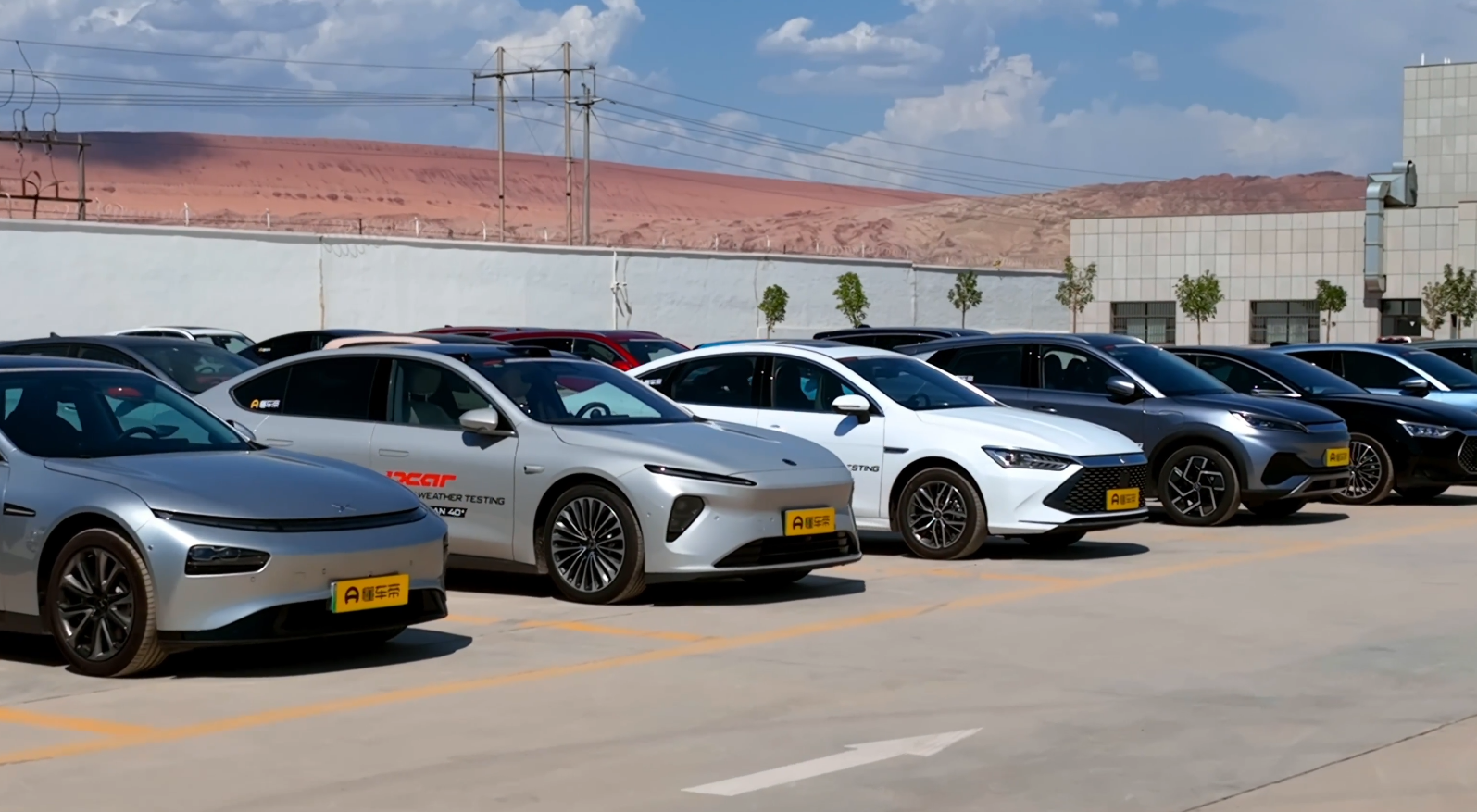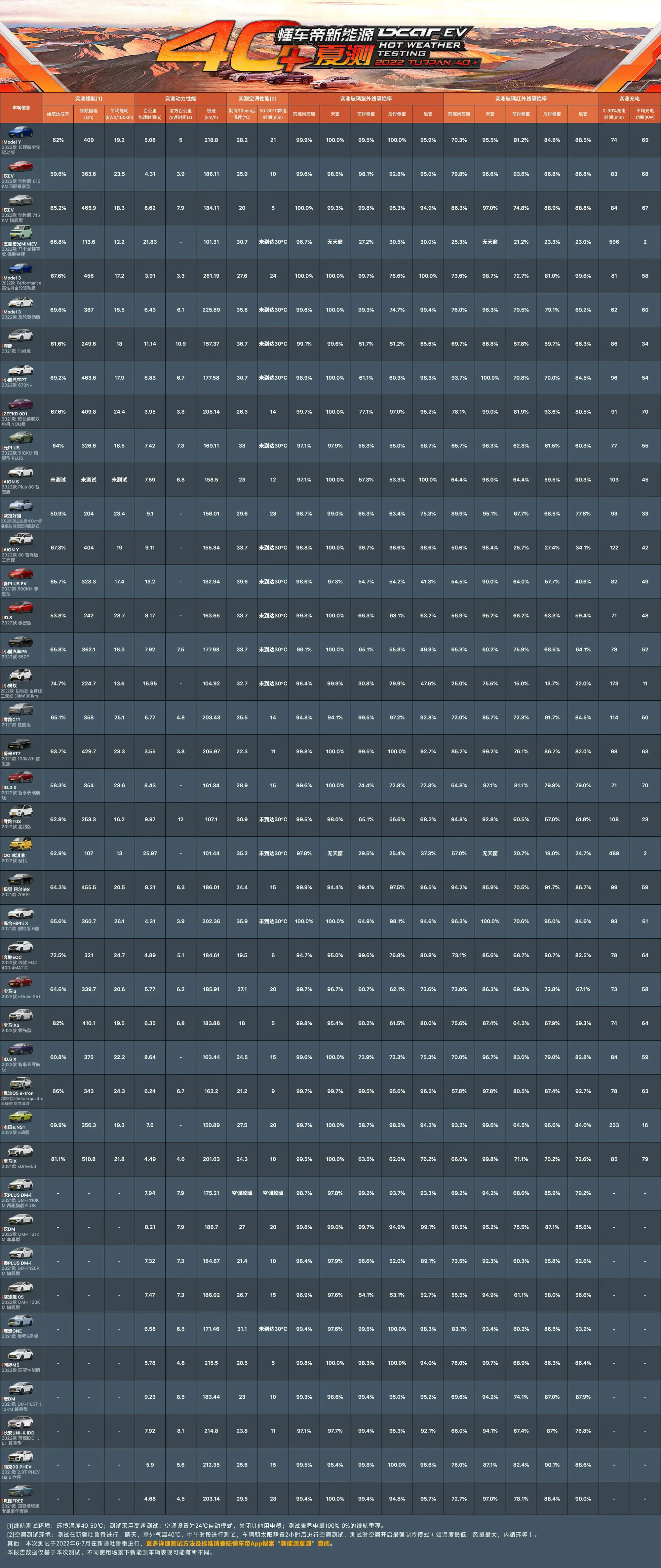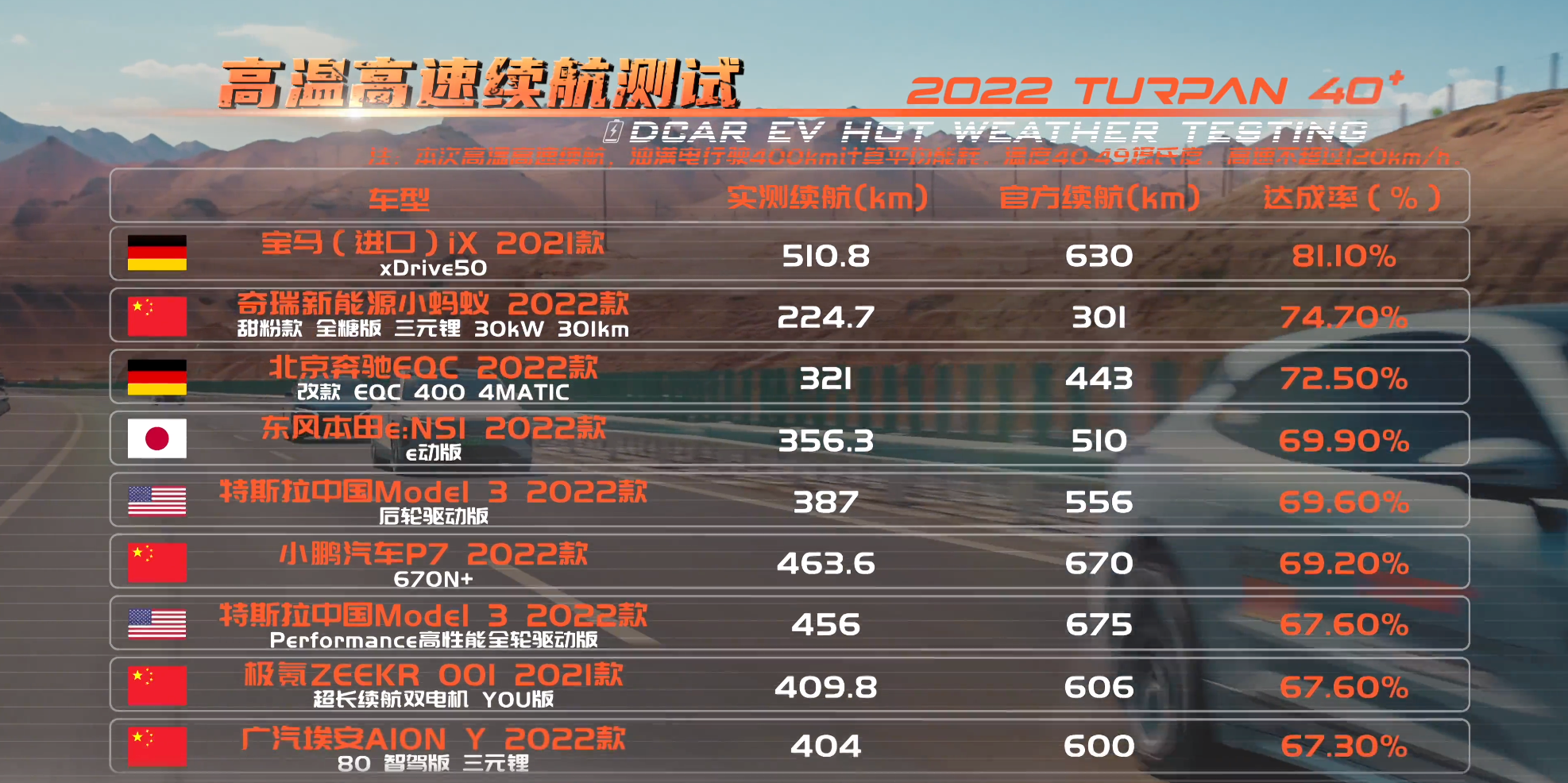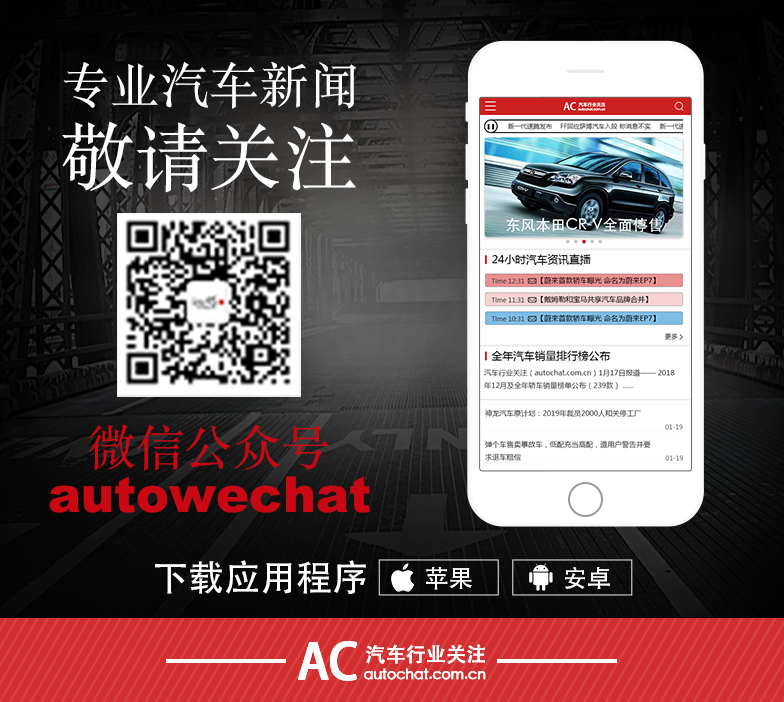In addition to Weibo, there is also WeChat
Please pay attention

WeChat public account
AutoBeta


2024-11-17 Update From: AutoBeta autobeta NAV: AutoBeta > News >
Share
AutoBeta(AutoBeta.net)07/24 Report--
In December 2021, Zhi Chedi completed a large-scale winter test of new energy in Yakeshi, Inner Mongolia, and tested the battery life and low-temperature charging performance of 41 popular new energy vehicles in extremely cold weather. Six months later, he came to Turpan, Xinjiang, to test 41 hot new energy vehicles again, including battery life, charging, acceleration, air conditioning, refrigeration, and intelligence, to test the performance and safety of new energy vehicles at high temperatures.

Different from the winter test, the performance of the new energy vehicle in the high temperature environment will be more prominent, such as "how much damage will the endurance of the new energy vehicle cause if it wants to maintain its comfort in the high temperature environment", "whether the power system of the new energy vehicle will be protected by heat" and "after high temperature exposure". The above questions can be answered in the test, such as what will happen to the new energy vehicle, "whether there is a risk of fire in the new energy vehicle after exposure", "whether it is dangerous to charge at high temperature", "whether the formaldehyde in the car exceeds the standard after exposure" and so on.
The test site for the summer test of new energy vehicles is located in Huoyan Mountain, Turpan, Xinjiang Uygur Autonomous region, which is called "Kiziltag" by locals. This is the hottest area in China. The temperature in summer is as high as 47 degrees Celsius, and it is said that the temperature at the top of the mountain can reach 80 degrees Celsius. In such a hot environment, it is not only a test for new energy vehicles, but also a "roast" test for testers.
From the three dimensions of battery life charging, high temperature exposure and intelligent cockpit, the evaluation includes high temperature life test, charging test, air conditioning test, car glass red UV insulation test, formaldehyde test, extreme speed test and high temperature acceleration test. a total of 7 items, specific test standards refer to the chart below:

The new energy vehicles participating in the summer test cover the mainstream models in all price ranges on the market, such as Hongguang MINIEV, Tesla Model 3/Model Y, Xiaopeng P7, Volkswagen ID.3, extreme Krypton 001, Euler Cat, BYD Dolphin, Audi Q5 e-tron, Xilai ET7, ideal ONE, Linke 09 PHEV, Lantu FREE, BMW IX and so on. It should be noted that, as an one-stop automobile information and service platform, it may not be as strict as the authority in testing, but based on the same environment, there are still certain reference standards for summer testing of Che Di New Energy. As for the test results of 41 new energy vehicles, please refer to the chart below:

First of all, there are new energy vehicles with less than 100000 yuan, including Wuling Hongguang MINIEV, Chery QQ Ice Cream, Chery Little Ant and Zero running T03, of which Chery Little Ant has a range success rate of 74.7%, Wuling Hongguang MINIEV 66.8%, Chery QQ Ice Cream and Zero run T03 are 62.9%. However, of the four models, the Wuling Hongguang MINIEV performed the best and did not break down from beginning to end, while the other three models showed anomalies during testing. Chery small ants showed power limitation and overheat protection, Chery QQ ice cream suffered power outage, and zero run T03 lost power directly when the mileage was left at 4%.
Among the 10-200000 yuan new energy models, the highest rate of range achievement is AION Y, which is 67.3%, while the worst performance is Euler Cat, which is only 50.9%. The fastest charging time is Volkswagen ID.3, which takes 71 minutes, while the slowest charging time is AION Y, which takes 122 minutes. In the top speed test, Changan UNI-K iDD can reach 214.8km/h as fast as possible, while Qin PLUS EV performed poorly, with only 132.9km/h as the fastest speed. In the extreme cooling speed of the air conditioner, the lowest temperature in the Qin PLUS DM-i car was 21.4%, while Song PLUS DM-i had the worst air conditioning failure during the test. In the infrared isolation rate test, Euler cats were 81.0% and AION Y was 47.2%, while in the UV isolation rate test, Song PLUS DM-i was 96.5% and AION Y was 62.1%.
From the point of view of the specific fault, there are two abnormal conditions in the zero run C11, and the thermal failure occurs many times in the high temperature charging, resulting in the charging interruption. There are many faults in meta-PLUS, including light lever failure, wiper failure, central control screen failure and so on, and the function of the vehicle can not be restored after restart, so the reliability of the vehicle at high temperature needs to be improved. In addition, Song PLUS DM-i has an air-conditioning failure.

Among the 20-300000 yuan new energy models, Honda e:NS1 has the highest rate of success, with 69.9%, while Volkswagen ID.4X has the worst performance, with 58.3%. The fastest charging time is Volkswagen ID.4X, which takes 71 minutes, while the slowest charging time is Honda e:NS1, which takes 233minutes. In the top speed test, the M5 can reach the 215.5km/h as soon as possible, while the Honda e:NS1 performed poorly, with the fastest speed only the 150.9km/h. In the extreme cooling speed of the air conditioner, the lowest temperature in the BYD EV is 20.0%, while the Xiaopeng P5 is 33.7%, which is the worst performance. In the infrared isolation rate test, BYD Han EV is 90%, Xiaopeng P5 is 66%, while in UV isolation test, BYD DM-i is 98.5%, and Xiaopeng P5 is 74.0%.
From the specific fault point of view, the newly launched Honda e:NS1 charging power is too low, seriously affecting the use experience, its window thermal insulation capacity is strong, but in battery life, acceleration, air conditioning and other aspects of mediocre performance, lack of bright spots. However, the most serious is the boundary M5, in which a fuse of the ESP was blown after exposure, causing the vehicle to be out of gear and unable to enter the trailer mode, making it impossible for the vehicle to move, causing great difficulties to road rescue.

Among the new energy models with more than 300000 yuan, BMW iX3 has the highest rate of success, which is 69.9%, while the worst performance is Model Y, which is 62.0%. The fastest charging time is Model 3, which takes 62 minutes, while the slowest charging time is Xilai ET7, which takes 98 minutes. In the top speed test, the Model 3P can reach 261.2km/h as fast as possible, while the Audi Q5 e-tron has the fastest speed only 163.2km/h. In the extreme cooling speed of the air conditioner, the lowest temperature in the BMW iX3 is 18.0%, while the lowest temperature of the Gaohe HiPhiX, which starts at 570000 yuan, reaches 359%. It seems that the air conditioner is not turned on. However, in the infrared isolation rate test, Gaohe HiPhi X isolation rate is 90%, BMW iX3 is 71%, while in UV isolation test, Model Y is 99.1%, while BMW iX3 is 78.6%.
From the specific fault point of view, the newly launched Honda e:NS1 charging power is too low, seriously affecting the use experience, its window thermal insulation capacity is strong, but in battery life, acceleration, air conditioning and other aspects of mediocre performance, lack of bright spots. However, the most serious is the boundary M5, in which a fuse of the ESP was blown after exposure, causing the vehicle to be out of gear and unable to enter the trailer mode, making it impossible for the vehicle to move, causing great difficulties to road rescue. In terms of specific failures, only the air conditioning failure occurred in the ET7, and more than once, seriously affecting the user experience.
In fact, from the actual measurement, most of the two laws can be summed up. One is that the overall performance of domestic new energy vehicles is better than that of joint venture / imported models. However, it should be noted that the overall performance of domestic new energy vehicles is better, mainly because more domestic vehicles are involved in driving, and only 11 of the 40 models are joint ventures / imports. Of course, this situation also reflects that the current domestic development of domestic new energy vehicles is indeed better than joint venture / imported new energy models, but compared with joint venture / imported new energy models, domestic new energy vehicles have more faults in the test. The second is that the higher the price is, the fewer faults are. The models with a price of more than 300000 yuan only have faults in the ET7, while the models between 10-200000 yuan and 20-300000 yuan have relatively more faults.
At the beginning of summer, there are more and more problems of new energy vehicles in China, especially fire accidents are relatively frequent, causing consumers to worry about the safety of new energy vehicles. Therefore, this summer test of new energy vehicles has a certain reference value for consumers who intend to buy electric vehicles, and this summer test just covers the mainstream domestic electric vehicle products. there will be a more comprehensive understanding of the actual performance of electric vehicles. Of course, the location of the test is Turpan Basin in Xinjiang, and the daily temperature can reach as high as 45 ℃. This kind of test environment is relatively harsh for new energy vehicles, which can be said to challenge the performance of new energy vehicles in all aspects to the maximum.
Welcome to subscribe to the WeChat public account "Automotive Industry Focus" to get the first-hand insider information on the automotive industry and talk about things in the automotive circle. Welcome to break the news! WeChat ID autoWechat
Views: 0
*The comments in the above article only represent the author's personal views and do not represent the views and positions of this website. If you have more insights, please feel free to contribute and share.











© 2024 AutoBeta.Net Tiger Media Company. All rights reserved.